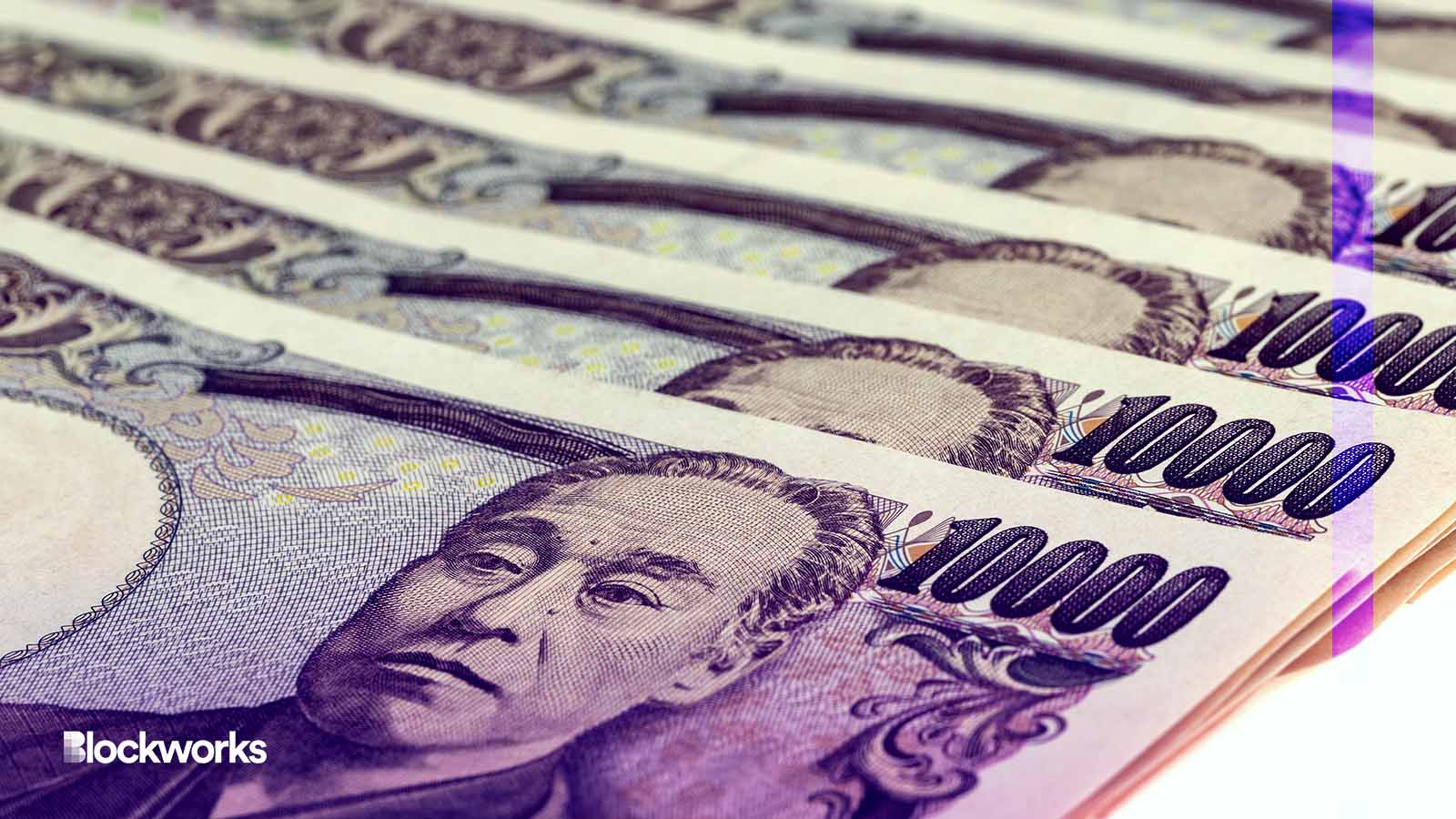Japan’s New Stablecoin Framework Could Spur US To Act
As Japan takes important step forward on stablecoins, industry participants say, proposed US laws around such crypto assets remain in flux

Daniel Fung/Shutterstock modified by Blockworks
As Japanese banks get set to issue stablecoins under new legislation, the US’ lack of regulatory clarity in the segment is one hurdle blocking institutions in the country from doing the same.
Japan in June 2022 passed a legal framework for stablecoins, which took effect Thursday.
The law requires that stablecoins — typically backed by one or more reserve assets — must be pegged to the yen or another legal tender and guarantee redemption to the holder at face value. It also confines the issuance of stablecoins to licensed financial institutions, such as registered banks, money transfer agents and trust companies.
The country’s step to bridge the gap between TradFi and DeFi with this initiative will benefit everyone in the long run, said David Tawil, co-founder of crypto fund ProChain Capital.
“In the US, most depositors, individual and business, have the benefit of free [automated clearing house] transfers intra-national,” he told Blockworks. “But, Japan’s initiative is a first step toward international frictionless, free money transfers.”
Updating from decades-old payment systems to cheaper and faster distributed ledger technology will always be a win for the customer, according to Jeff Embry, managing partner at crypto hedge fund Globe 3 Capital.
“The key will be making sure these stablecoins utilize a trustless, immutable and transparent blockchain versus being in control of one bank or one government like a CBDC would,” Embry added.
Tokyo-based GU Technologies in March launched a public blockchain — called Japan Open Chain — as a way to allow three Japanese financial institutions to experiment with issuing stablecoins complying with the country’s laws. The stablecoins would be compatible with Ethereum wallets via Metamask, for example.
Embry said that if Japanese banks only look to create their own stablecoins, the stablecoin ecosystem will struggle.
“We like to see stablecoins originate outside of the bank ecosystem bubble, as that is where true, immutable, transparent stablecoin innovation and adoption will prosper,” the Globe 3 Capital executive noted.
What would it take for US banks to issue stablecoins?
While regulations would be key for US banks to issue stablecoins, proposed bills on this subject remain in flux.
Recent hearings by the House Financial Services and Agriculture committees show crypto regulation could be two or three years off, according to Compass Point Research & Trading analysts Chase White and Joe Flynn.
“What we saw in these hearings is that members of Congress do not agree intraparty, much less interparty, on the basic tenets of even stablecoin legislation, which is seen by many observers as low-hanging fruit relative to comprehensive crypto legislation,” White and Flynn wrote in a research note last week.
Meanwhile, comments from regulators seem to contradict one another amid a war to regulate the crypto space. CFTC Chairman Rostin Behnam said in March stablecoins such as tether (USDT) could be considered commodities, while SEC chairman Gary Gensler has claimed every crypto asset, besides bitcoin, could be a security.
Aside from a lack of movement and clarity from legislators and regulators, stablecoin adoption might be slow for big US banks who want customers to continue paying wiring fees.
“Banks are slow to adopt because they are the middlemen that blockchain eliminates,” Embry said. “Once customers see the huge benefits of using stablecoins the demand for them will be so great the banks won’t have a choice but to adopt them.”
JPMorgan offers JPM Coin, a permissioned payment rail and deposit account ledger for clients to transfer US dollars held with JPMorgan within the bank’s system. But Embry called the system more of a tool for clients than a true open-sourced blockchain stablecoin.
JPMorgan and consulting firm Oliver Wyman said in a joint study published earlier this year that using bank-issued deposit tokens to transfer value across chains is safer than using stablecoins.
Similar to his wish for Japanese institutions, Embry said he hopes US banks ultimately adopt stablecoins from third-party innovators rather than creating their own.
Tether’s stablecoin market capitalization has surged in recent months — standing at nearly $83.3 billion on Thursday. The market cap of competing stablecoin USD Coin (USDC) was just below $29 billion.
“I think at some point, some country or countries around the world are going to lap us on this, and that’s when we’re going to get into gear here,” Tawil said of US stablecoin adoption. “We don’t do anything in this country until we’re under threat. Debt ceiling, case and point.”
Get the news in your inbox. Explore Blockworks newsletters:
- The Breakdown: Decoding crypto and the markets. Daily.
- 0xResearch: Alpha in your inbox. Think like an analyst.






